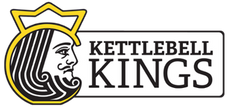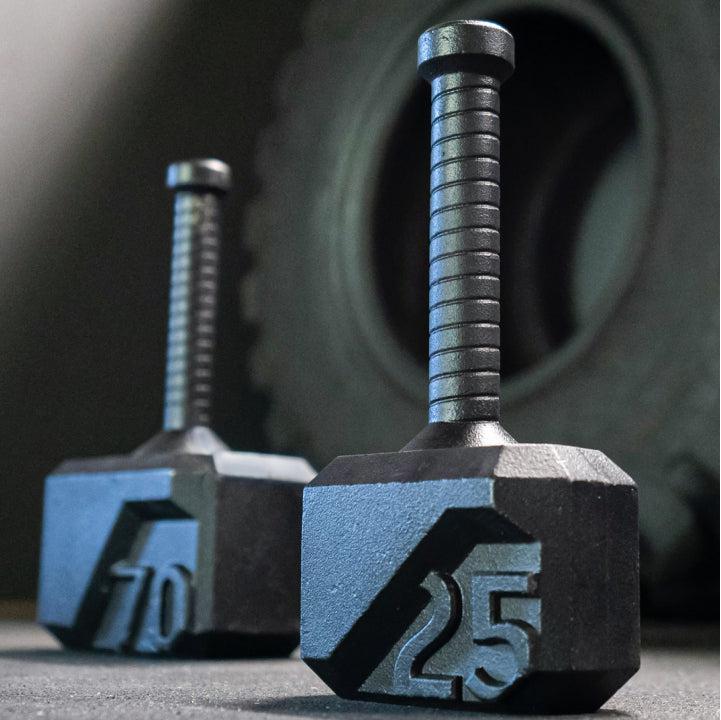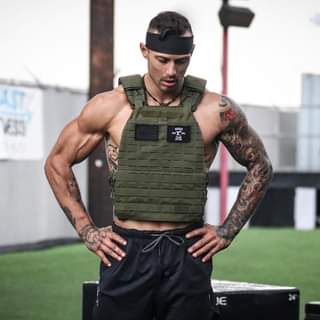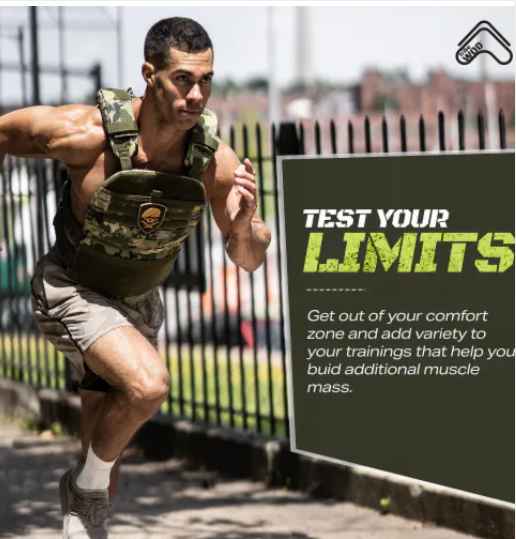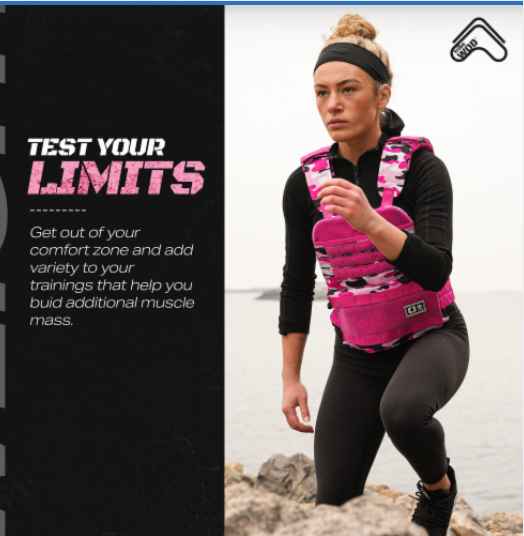Technically, yes, you can wear a weighted vest all day. However, the decision to do so should be approached with careful consideration of both the potential benefits and the inherent risks. It’s not merely a question of can, but rather should, and under what conditions.
The question of whether one can wear a weighted vest all day taps into the broader discussion of optimizing fitness routines and leveraging every moment for health benefits. Weighted vests offer a unique way to add resistance to your daily routine, potentially amplifying the physical benefits of regular activities. Yet, the extended wear of such vests requires an understanding of how to balance these benefits against the possible drawbacks to ensure overall health and safety.
What happens if I wear a weighted vest all day?
Increased Caloric Burn
The logic is straightforward, by adding extra weight to your body, everyday activities demand more effort and energy expenditure. Adding a weighted vest to your daily routine is like turning up the dial on your calorie-burning furnace. Every step you take, every move you make becomes a mini-workout because your body has to work harder than usual. This extra effort means you're burning more calories throughout the day, not just during your workout sessions. It's a simple equation: more weight equals more energy spent, which can help you either lose weight or keep extra pounds from creeping on.
Improved Muscular Endurance and Bone Density
Continuous wear of a weighted vest could lead to adaptations in muscular endurance, particularly in the lower body and core. The constant, added resistance forces your muscles, especially those in your lower body and core, to adapt and grow stronger over time. This means activities that were challenging before can become easier as your muscular endurance improves. But the benefits don't stop with muscle; they extend to your bones as well. Engaging in weight-bearing activities with added resistance, like wearing a weighted vest, can stimulate bone formation and slow down bone loss. This is crucial for overall bone health and can reduce the risk of osteoporosis and other bone-related conditions later in life. The principle behind this is simple: just as muscles grow stronger when subjected to forces they need to adapt to, bones also become denser and stronger when regularly challenged by weight. So, wearing a weighted vest can be a two-for-one deal, boosting both muscle endurance and bone density, making it a valuable addition to a holistic fitness regimen.
Weighing the Risks
Risk of Overuse Injuries
The allure of constant resistance training through wearing a weighted vest all day comes with its caveats, notably the heightened risk of overuse injuries. The added weight increases the demand on your body, placing continuous stress on joints, muscles, and connective tissues. This can be particularly taxing on the knees, hips, and spine, which bear the brunt of the additional load during daily activities. Over time, without adequate rest and recovery, this relentless strain can lead to injuries such as tendinitis, stress fractures, or joint wear-and-tear, conditions that not only hinder progress but can also necessitate long-term recovery.
Extended wear of a weighted vest without strategic planning can subtly shift the biomechanics of movement, potentially leading to compensatory patterns that exacerbate the risk of injury. It’s crucial, therefore, to listen to your body’s signals—such as persistent soreness, discomfort, or decreased mobility—and to allow for recovery periods. Incorporating strength training to bolster the musculoskeletal system can also aid in mitigating these risks, ensuring the body is better equipped to handle the additional weight.
Potential for Poor Posture and Muscle Imbalances
Adopting a weighted vest as a permanent fixture in your daily wardrobe requires careful consideration of its impact on posture and muscular balance. Incorrectly distributed weight or excessive load can amplify postural misalignments, encouraging the development of muscle imbalances as the body attempts to compensate for the unnatural distribution of weight. For instance, a vest that places too much weight on the front of the body can lead to a forward lean, straining the back muscles and potentially leading to chronic back pain or misalignment issues.
To counteract these potential pitfalls, it’s imperative to select a weighted vest that allows for even weight distribution across the body. Engaging in exercises that strengthen the core and upper back can also provide the necessary muscular foundation to support the added weight, promoting proper posture and reducing the likelihood of developing imbalances. Regularly assessing and adjusting the fit and weight distribution of the vest can further prevent the onset of these issues, ensuring the benefits of wearing the vest are not overshadowed by avoidable drawbacks.
The Necessity for Gradual Adaptation
The human body is remarkably adaptable, capable of adjusting to increased demands when changes are introduced progressively. When it comes to wearing a weighted vest all day, a gradual introduction is key to avoiding undue strain and maximising the potential benefits. Starting with a lighter weight allows the body to adapt to the new challenge without overwhelming the musculoskeletal system. Over time, as strength and endurance build, the weight can be incrementally increased, fostering continued progress while minimising the risk of fatigue or injury.
This approach not only facilitates physical adaptation but also allows for the psychological adjustment to the added weight, making the experience more manageable and sustainable in the long term. It’s essential to integrate rest days and to monitor closely for any signs of overexertion, such as excessive fatigue, pain, or a decline in performance. By adhering to the principles of gradual adaptation, individuals can harness the full potential of wearing a weighted vest, transforming everyday activities into opportunities for enhancing physical fitness.
Guidelines for Safe and Effective Use
To navigate the benefits and risks, it’s crucial to start with a low weight, limit initial daily use, ensure the vest fits properly for even weight distribution, and listen to your body’s signals. Adjustments should be made based on personal comfort and fitness levels, with an emphasis on gradual adaptation.
Starting with Low Weight
One of the most critical steps in safely integrating a weighted vest into your regimen is to begin with a manageable weight. It's recommended to start with a vest that adds no more than 5-10% of your body weight. This initial moderation is crucial to allow your body to adjust to the new demands without overwhelming your musculoskeletal system. A gradual increase in weight can follow as your strength, endurance, and adaptability improve, ensuring a steady progression that aligns with your body's natural capacity for adjustment.
For those considering adding a weighted vest to their regimen, exploring options like those provided by Kettlebell Kings, offering a wide range of weighted vests designed for various fitness levels, can be a great start. Ensuring a proper fit and adjustable weight can make integrating a weighted vest into your routine both safe and beneficial.
Limiting Initial Daily Use
Just as important as the amount of weight is the duration for which it is worn. Initially, wearing the vest for short periods during daily activities or specific exercises can help your body acclimate to the extra load. This could mean wearing the vest during a short walk, part of your workout routine, or while performing household chores. Gradually extending the duration as your comfort and fitness levels increase prevents overtaxing your body and allows for necessary recovery periods, thereby reducing the risk of overuse injuries.
Ensuring Proper Fit and Even Weight Distribution
A properly fitting weighted vest is essential for maintaining balance and preventing strain on any particular part of the body. The vest should be snug enough to prevent excessive movement without restricting breathing or circulation. Additionally, the weight should be evenly distributed to avoid postural imbalances and ensure that no single part of the body is unduly stressed. Regular adjustments may be needed to maintain an optimal fit as your body changes or as you increase the vest's weight.
Listening to Your Body
Perhaps the most crucial guideline is to maintain an open line of communication with your body. Signs of discomfort, pain, excessive fatigue, or any other indications of distress should not be ignored. These signals are your body's way of indicating that it needs rest, recovery, or a reassessment of the weight or duration of vest use. Ignoring these signs can lead to injury and setbacks, undermining the very benefits you seek to gain from the weighted vest.
Making Adjustments for Personal Comfort and Fitness Levels
Recognizing that each individual's body responds differently to physical stress, adjustments to the weighted vest regimen should be personalised. This means being willing to modify the weight, wear time, or even the exercises performed with the vest in response to your body’s feedback. Such flexibility ensures that the use of a weighted vest remains a beneficial tool tailored to your unique fitness journey, promoting progress without compromising safety.
For those considering adding a weighted vest to their regimen, Kettlebell Kings provides a selection designed to accommodate various fitness levels and training goals. Their range includes adjustable weighted vests that allow for precise control over the weight you carry, enabling you to gradually increase resistance as your strength and endurance improve. This feature is particularly beneficial for ensuring a progressive overload, a key principle in strength training and muscle building.
Consulting Health Professional
Always consult with a healthcare professional before making significant changes to your fitness routine, especially if you have pre-existing health conditions or concerns.
By adhering to these guidelines, individuals can safely explore the potential of weighted vests to enhance their fitness routine. The emphasis on gradual adaptation, coupled with a keen awareness of personal limits, forms the foundation of a successful and sustainable approach to using weighted vests for improved health and performance.
Alternatives for Achieving Similar Benefits
Incorporating targeted strength training, high-intensity interval training (HIIT), and strategic, short-duration use of weighted vests can also provide significant fitness gains without the potential downsides of all-day wear.
Targeted Strength Training
Focusing on specific muscle groups through strength training exercises is a highly effective method for building muscle mass, strength, and endurance. Utilising equipment such as dumbbells, barbells, and resistance machines allows for precise control over the amount of resistance, enabling a progressive overload that is fundamental to muscle growth. This approach also allows for a balanced development of muscle groups, reducing the risk of imbalances and injuries. By adjusting the weight, reps, and sets, individuals can tailor their workout to their fitness level and goals, ensuring continuous improvement.
High-Intensity Interval Training (HIIT)
HIIT involves short bursts of intense exercise followed by brief periods of rest or lower-intensity activity. This training modality has been shown to significantly improve cardiovascular health, increase calorie burn, and enhance muscular endurance and strength. HIIT can be adapted to various fitness levels and does not necessarily require equipment, making it a versatile and accessible option. The efficiency of HIIT in achieving considerable health and fitness benefits in shorter sessions addresses the time constraint concerns that often accompany traditional workout routines.
Short-Duration But Strategic Use of Weighted Vests
Incorporating weighted vests into specific parts of a workout routine rather than wearing them throughout the day can concentrate the benefits while minimising risks. For example, wearing a weighted vest during bodyweight exercises such as squats, push-ups, or pull-ups can increase the intensity of these exercises, enhancing strength and endurance gains. Similarly, using a vest during short walks or sprints can improve cardiovascular fitness and leg strength without the prolonged stress on the body associated with all-day wear. This targeted approach allows for the benefits of added resistance while ensuring recovery periods for the body, maintaining a healthy balance.
These alternatives to all-day weighted vest wear not only provide a safer route to achieving fitness goals but also introduce variety into workout routines, which can be crucial for maintaining motivation and engagement over time. By exploring and integrating these methods, individuals can construct a comprehensive fitness regimen that promotes overall health, strength, and endurance, tailored to their personal preferences, needs, and lifestyle.
Conclusion
Deciding if you should wear a weighted vest all day is more about being smart than just saying yes or no. It's true, wearing a vest can make your workouts better by helping you burn more calories, get stronger, and even improve your bones. But, it's not without its downsides. Wearing it all the time can be tough on your body, like hurting your joints or messing with your posture. This tells us that when it comes to fitness, knowing what's best for your body is key.
To make sure you're using a weighted vest the right way, start light and don't wear it for too long at first. Make sure it fits you well and the weight is spread out evenly. And always, listen to what your body is telling you. If something hurts or feels off, it's time to take a break or make some changes. You can also try other workout styles like strength training or quick, intense exercises known as HIIT, which can give you some of the same benefits without needing to wear the vest all day.
In the end, wearing a weighted vest can be a great addition to your workouts, but it's not the only way to get fit. Mixing things up and finding what works best for you is the secret to staying healthy and strong. Remember, the goal is to improve, not to push yourself too hard and end up getting hurt. Fitness is all about taking care of your body and making sure you're doing things the right way.
